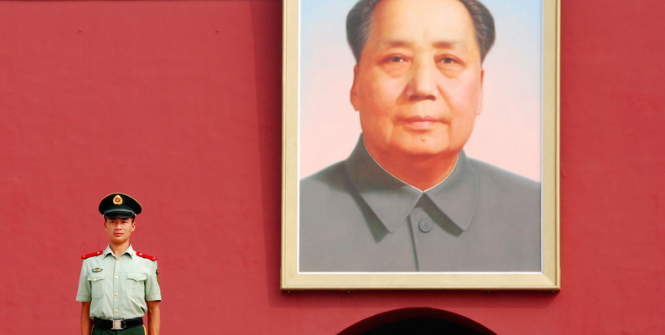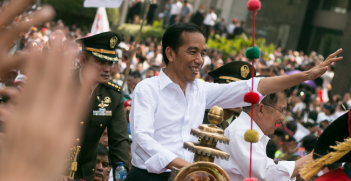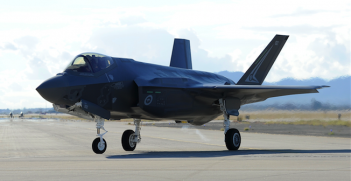A New Silk Road for a New China

With an conservatively estimated cost of $US40 billion, Chinese President Xi Jinping has unveiled the PRC’s plans for a New Silk Road, the One Belt, One Road (OBOR) policy, but how will the US respond to this ambitious attempt to dethrone it as the global hegemon?
The Silk Road was an ancient network of trading routes connecting the eastern and western ends of the Eurasian landmass. As well as trade, the Silk Road connected cultures and civilisations, leading to the spread of ideals, technologies, and armies.
In September and October 2013 President Xi Jinping unveiled the PRC’s plans for a New Silk Road, the One Belt, One Road (OBOR). The modern version, broken into the terrestrial ‘Silk Road Economic Belt’ (SREB) and its maritime equivalent the ‘Maritime Silk Road’ (MSR) is perhaps modern China’s most ambitious project, with the idea that the OBOR will serve the same function as its ancient precursor, though on an unprecedented scale, made up of networks of railways, highways, oil and gas pipelines, communication lines, airports, and ports. According to Chinese state media, once completed, the OBOR will link 4 billion people in 65 countries.
With an conservatively estimated cost of $US40 billion just to get the ball rolling, and the establishment of the Beijing controlled Asian Infrastructure Investment Bank – ostensibly a viable alternative to western institutions like the IMF – to fund the creation of facilities and infrastructure related to OBOR, the question is why would the PRC commit to spending funds and resources on what may well be the most expensive infrastructure project in history?
The PRC’s overriding objective is the stability and legitimacy of Party rule. China is in the unique position of having (in one form or another) existed for 5,000 years. The Party has set about maintaining continuity with previous incarnations of China as its basis of social cohesion. China was the preeminent world power for many of these previous incarnations. Due to the lack of democracy, the Party does not rule by direct mandate of the people, but, in keeping with its social cohesion theme, as a continuation of the ancient ‘mandate of heaven’, enjoyed by Chinese Emperors. The key to keeping this mandate is providing economic prosperity for the people and the promotion of Chinese nationalism. The OBOR provides another link to China’s past that the PRC can exploit. It is no coincidence that the plan is for the SREB and MSR to marry up in Venice.
In 2012, shortly after being elected, Xi Jinping announced the hallmark of his administration would be the ‘Chinese Dream’, a ‘rejuvenation of the Chinese nation’, a statement taken to mean the attempt to take China back to its place as the preeminent global power, a mighty nation reclaiming its rightful place in the world, not just economically, but also politically, militarily and culturally. In 2005, policymaker Zheng Fijian established the concept of the ‘peaceful rise’ of China, arguing ‘Chinese Exceptionalism’ made the rise of China different compared with the rise of other powers, as China did not acquire its resources though invasion, aggression or warfare, but through peaceful means. The OBOR will be used to strengthen the rhetoric behind ‘Chinese Dream’ and ‘peaceful rise’.
Geopolitically, the PRC can act as the gatekeeper to the OBOR, permitting access to these newly built ports, pipelines, railways etc. as a bargaining tool to nations in return for support of Chinese interests, or, conversely, restrict access to potential competitors such as the US, and to punish nations which do not support Chinese interests. The China-Pakistan Economic Corridor (CPEC), a $US46billion 2,900km offshoot of the OBOR that would make the PRC a two-ocean maritime power, is an example of the former, and displays to other nations what potential offshoots may be available to them if they follow China’s lead.
Economically, it is hoped that the Renminbi will be the currency of choice for trade transactions along the OBOR, undermining the US dollar as the global currency. The materials for the railroads, ports, highways and other infrastructure will largely be built within the PRC, providing stimulus for the local economy. Once complete, the OBOR will transport Chinese goods to destinations across the world much faster than they do at the moment. Likewise, foreign goods will make their way to the world’s most populous market must faster than they do now. The local economies of developing nations connected to the OBOR will also benefit.
There are, however, many unanswered questions. Will the PRC enter into Free Trade Agreements with the 65 countries involved, or will there be some sort of grand free trade zone involving multiple states, as the US is trying to do with its Trans Pacific Partnership and TransAtlantic Trade and Investment Partnerships? Many of the areas the OBOR will travel to, including the east coast of Africa and large parts of central Eurasia are quite dangerous, and there has been no information provided on how the PRC plans to mitigate the risks in these areas. How big a role will the PLA play in the security of the OBOR in these dangerous areas, and will there be Status of Forces agreements? And – the most important question of all – how will the US respond to this ambitious attempt to dethrone it as the global hegemon?
Stjepan Bosnjak is a Master of Arts (Research) student at Victoria University. His thesis ‘The Man of Steel and the Dragon’ examines Australia’s relationship with China during the Howard Era through a neoclassical realist paradigm. This article can be republished with attribution under a Creative Commons Licence.





